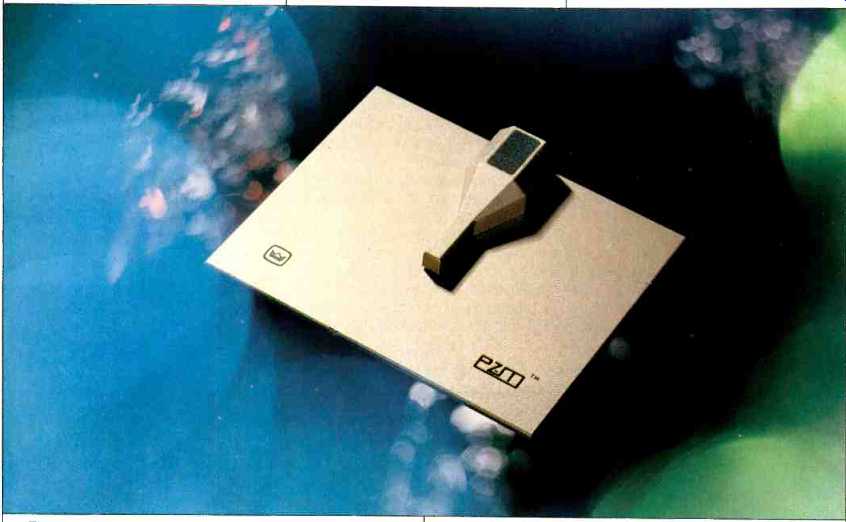
Manufacturer's Specifications
Active Element: Pressure calibrated electret condenser.
Frequency Response: 50 Hz to 15 kHz.
Polar Pattern: Hemispherical.
Electrical Impedance: 150 ohms balanced with PA-18B (active) or PX 18B (transformer) power supplies.
(Crown recommends PX-18B for use with consumer recorders having unbalanced inputs.)
Normal Loading Impedance: 1 kilohm (150-ohm unloaded input).
Total Harmonic Distortion: 3% at 150 dB SPL (maximum input level).
Noise Level: Less than 26 dB equivalent input SPL.
Sensitivity: Open circuit voltage, -76 dB, re: 1 volt per microbar (- 56 dB, re: 1 V/Pa).
Power Source(s): PA-18B or PX-18B power supplies operate from two internal 9-V batteries (MN1604) or external phantom power, 15 to 48 V d.c.
Dimensions: Microphone, 5 x 6 x 3/4 inches; power supply, 5 x 1 7/8 x 1 3/4 inches.
Supplied Accessories: 5 1/2-foot cable from mike to power supply, PA-18B or PX-18B power supply (user's choice), windscreen, plastic storage case.
Price: Model PZM-30GPG, gold finish, or Model PZM-30GPB, black finish, $349.00.
Company Address: 1718 West Mishawaka Rd., Elkhart, Ind. 46514.
The regular Audio reader has been introduced to the Pressure Zone Microphone via Ed Canby's columns in the October and November, 1981 issues. This review presents both measured data on a specific PZM model and information on how this new professional tool can be utilized in amateur recording and sound work.
The PZM design is simple, but unique: An electret micro phone element is positioned upside down, about 1 mm from a metal backing plate; it and its associated connector are held in position by a conductive plastic housing filled with flexible potting compound. The element is actually an electret cartridge, complete with miniature amplifier, developed and produced by a manufacturer of hearing-aid microphones. These amazing devices are manufactured in high enough volume to be low in cost, but Crown indicates that they must be carefully tested and selected to meet the PZM's rigid performance specifications; this is reflected in the relatively high selling price.
The idea behind the PZM goes back at least to the mid-'60s, when RCA's acoustic laboratories and independent soundmen experimented with microphones placed on or near the floor. This allows the direct sound wave from the performer to reach the microphone at the same time as the sound reflected off the floor. Logically, this should eliminate "comb-filter" effects, multiple dips and peaks caused by phase interference between the direct and reflected sounds. Later, microphone manufacturers designed special gadgets to position mikes close to the floor, such as E-V's "mike mouse."
Meanwhile, a number of West Coast audio engineers, including Audio's Ed Long, were inventing and experimenting with PZMs. The results were good, and Crown International now manufactures these microphones.
Of what interest is the PZM to the audiophile? The literature promises better quality music and vocal recordings. The improvement is said to be very significant as compared to conventional microphones on floor stands or mikes "flown" above the sources of sound. Those of us who do not like to carry mike stands (which may weigh more than a modern cassette recorder), or risk life and limb in "flying" our mikes, will appreciate the simplicity of PZMs. They fit in small boxes, weigh next to nothing, and can be rapidly set up by placing them on the floor or a wall. Since their bass response is proportional to the size of the plane they're mounted on, they should be backed up with mounting planes when they are "flown"; if transparent Plexiglas panes are used, the microphones remain relatively inconspicuous.
The PZM-30GP tested here is the general-purpose model, available in gold (30GPG) or black (30GPB). Six other models are listed in Audio's October 1982 Annual Equipment Directory. These include miniature versions, versions on tie clips, and for mounting on musical instruments, lecterns or conference tables. The PZM-30GP (and the smaller PZM 6LP with attached cable) have responses with "presence humps" at 10 kHz, to counteract high-frequency attenuation in the air.
Two power-supply options are available, the PA-18B active circuitry power supply and the PX-18B transformer power supply. Both provide for either "phantom" powering (18 to 48 volts, preferably 48 volts) through the audio cable, or for power from built-in, 9-volt alkaline batteries (When used with batteries, these supplies should be switched to "Phantom" when packing up, to prevent battery drain.) For this review, the PX-18B was selected because its audio output can be connected directly to unbalanced inputs of typical open-reel and cassette recorders.
Measurements
Figure 1 shows a family of impedance curves. The output impedance of the PZM-30GPG with the PX-18B power sup ply is much lower than its 150-ohm rating at 1 kHz, but rises above 150 ohms at 20 kHz. This would seem to indicate high leakage inductance in the transformer, and the inductive termination of the microphone line could encourage radio frequency interference (r.f.i.). When the PZM is disconnected, the PX-18B has a curve like a 420-ohm resistor. With a simple battery power supply, the direct PZM impedance is 3,400 ohms resistive. Adding the Shure A97A trans former yields 200 ohms resistive, an ideal termination for a long microphone line.
How does one test a PZM's frequency response? Ideally, the PZM would be placed on a large outdoor parking lot, with the sound source suspended overhead. Baffle surfaces of practical size introduce dips and peaks into the response, due to reflections from their edges. Crown uses Time-Delay Spectrometry (as in Dick Heyser's speaker re views for this magazine), which discriminates against room and baffle reflections. Because I wanted to eliminate these reflections only in one test, I devised a simple method where the unique properties of my laboratory sound source were used to accomplish this objective. The sound source (see Audio, April 1977) has a 2-inch aluminum piston suspended by nylon threads. The "far field" (according to accepted practice) begins at a distance of 4 inches. I discovered that the PZM, mounted on an easily handled 2 x 2 foot baffle, exhibited a smooth frequency response curve at 6 inches from the source. This is because the edge reflection path is more than 2 feet, and the reflection SPL is therefore about 12 dB less than the direct SPL. Thus, the reflection dip at 700 to 800 Hz is seen to be only 1 or 2 dB (Fig. 2). I call this the "Pseudo-Infinite-Baffle" frequency response. The curves of Fig. 2 are in good agreement with Crown's published curves and fall within the tolerance envelope. Without the windscreen, the 30GPG high-frequency response is at the extreme of tolerance, but falls to nominal with the screen. The GPB unit as received did not have a foam damper under the cartridge, as did the GPG. Crown sent me some foam pieces which damped the 10-kHz response, so it is well matched to the 30GPG. This damper is not glued in place; if you see light in the slot under the cartridge, the foam has fallen out and the high-frequency response is likely to be out of tolerance.
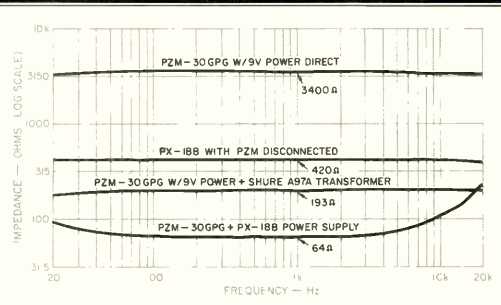
Fig. 1--Impedances for various combinations of PZM microphones and power
supplies.
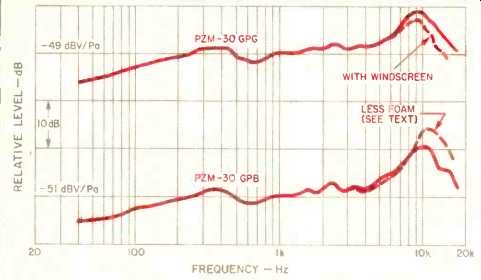
Fig. 2--Pseudo-infinite baffle frequency responses.
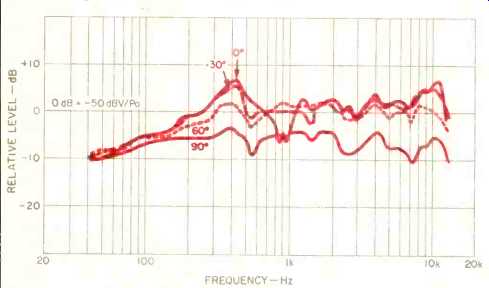
Fig. 3--Directional frequency responses of PZM-30GPG on 2 x 2 foot baffle.
My reference for all tests was the free-field sound pres sure level, which is the SPL in free space at the PZM element location, with no microphone or baffle present. The measured output level values are thus 6 dB higher than Crown's data, because the pressure-doubling at the baffle increases the PZM output level by 6 dB. This also results in the measured noise level (in equivalent SPL) being 6 dB lower than specifications. Crown could justifiably claim the PZMs to be 6 dB "better" by adopting my computation scheme, which, I believe, more strictly conforms to EIA standards for microphone testing.
I wanted to verify Crown's claim that, on a baffle, the PZM's directional pattern is perfectly hemispherical at all frequencies. Crown recommended a 4-foot-square baffle for the test.
Ron Streicher, a West Coast recording engineer, had challenged me to find the 6 dB step in the PZM's low-frequency response, which varies with baffle size. The baffle cutoff frequency for a square baffle is given by the formula f = 283/D, where D is the length of one baffle side, in feet (see Table At the cutoff frequency the baffle's pressure-doubling effect vanishes, and the PZM's output level drops by 6 dB (for square baffles; for rectangular ones, 3 dB for each side's cutoff frequency), remaining at this level down to the capsule's cutoff frequency. To be measurable, the baffle cutoff must be well above the capsule cutoff frequency. A 2 x 2 foot baffle is suitably sized for this test. (Obviously, a PZM will perform rather poorly on baffles smaller than 2 feet on a side.)
I cut the required baffles from half-inch plywood, mounting each in turn on a pipe stand, outdoors, at six feet from my large, spherical sound source (Audio, September 1978). A distance of 8 feet is more appropriate for testing a microphone on a 4-foot baffle, but 6 feet was used, to be in agreement with previous tests using this source.
Comparing Figs. 3 and 4, the decrease in low-frequency response is steeper at the small baffle's 142-Hz cutoff frequency than with the larger baffle because the larger one, being rectangular, has different cutoffs for each side. Edge reflection dips are seen at 450 Hz for the 4-foot, and 900 Hz for the 2-foot, in exact ratio to the size of the baffles. Curiously, these dips smoothed out at 30° to 90° off-axis. However, the response at 0° and 30° with the small baffle is decidedly more ragged than with the 4-foot baffle. Considering the entire hemisphere, the 2-foot baffle is actually not very inferior to the 4-foot, except for the loss in bass response. At 90°, the responses with either baffle drop 6 dB in level (pressure doubling vanishes) but remain uniform.
The results of these tests do confirm, in my opinion, that the PZM directional pattern is hemispherical over its useful frequency range. Since the 90° responses are attenuated by 6 dB, and a PZM (on a large baffle) has no 180° response, the PZM seems to resemble a unidirectional microphone. This may account for the reports by users that a PZM has long "reach." The 10-kHz hump in the high-frequency response of Fig. 2 is not so pronounced in the real-world baffle curves of Figs. 3 and 4, so the 30GP's response is probably appropriate to many practical applications. Without a baffle, response rose very steeply across the entire audio frequency range, so the PZM is not to be used this way.
Next, I devised tests to investigate the "comb-filter" effect which the PZM is said to eliminate. The 2-inch sound source, which is quite omnidirectional, was placed 8 feet away from the PZM, which was on the hard floor of my 14 x 25 foot listening room. (It would be better to conduct such a test on the floor of a large stage, since the PZM eliminates reflections only from the surface upon which it is placed.) Three kinds of conventional microphones were in turn placed on a tripod stand 5 feet above the PZM, and then positioned on the floor near the PZM. The source was driven by a pure tone, and the microphone outputs recorded on a strip chart. A Nakamichi CM-700 with omni- and unidirectional capsules plus an RCA 44-BX (figure-8 pattern) served as the three conventional microphones. Inspection of the resulting strip charts showed that none of the conventional microphones exhibited as smooth a curve as the PZM. The "comb filter" showed up as a series of holes in the response curves in the region of 200 to 1,000 Hz. I even tried the omni mike head-down, 1 mm from the floor. This did not eliminate the "comb filter," so it seems that there is no way to equal PZM performance with conventional commercial micro phones. I did not try laboratory condenser microphones, because their noise level is too high for practical use in voice or music applications.
The self-noise testing of the PZM-30GPG with the PX-18B showed overall levels of 19 dB (A weighted), or 28 dB in a flat 15-kHz bandwidth. Figure 6 shows the spectrum, which is a falling-with-frequency curve. The manufacturer's specification of 26 dB is presumably A weighted, and in my frame of reference would be stated as 20 dB. The "hiss" level of the PZM was so low that my readings had to be corrected for amplifier noise in the region of 5 to 15 kHz. Some recorder preamps will probably be noisier than the PZM. Many Japanese recorders are designed for 600-ohm microphones; a 150 to 600 ohm line matching transformer should be used to obtain optimum S/N with them.
PZMs are unusual in that the 5-foot cable run from mike to power supply is not low impedance, and could be subject to noise interference from electrical appliances, motors, fluorescent lights, computers and radio transmitters. At the time of these tests, I had two PZM-30GPs obtained some time ago by Audio, and two PZM-30GPs plus two PZM-31S mikes just purchased from a local Crown dealer. These showed a mixed bag of manufacturing variations that could cause noise problems. The cables included 3- and 2-wire shielded varieties, and these were wired in three different ways. I rewired all of the older ones to equal the newer, 2-wire shielded cables. In each cable, I connected the female connector sheik() pin 1 (shield), leaving the male connector shell ungrounded. This assured that the PZM plates would be grounded to the pin 1 shield circuit, but would not be connected to the chassis of the PX-18B. This alludes to two more problems: Three of six PZM plates were not grounded to pin 1. (All new ones are supposed to be grounded.) The PX-18B supply, with a standard 3-pin microphone input connector, causes the PZM plate and PX-18B chassis to have a voltage difference of 9 volts. Murphy's Law requires that someone will someday short the two together, burn out a battery, and make a very noisy tape recording. II recommend that Crown use 4-pin connectors and 3-wire shielded cable to prevent this. The existing cables were tested for r.f.i. by laying them on a wooden bench at 1 meter from, and parallel to, a quarter-wavelength antenna which was driven by a 1-watt aircraft transmitter at 122.9 MHz. The carrier was amplitude-modulated by voice. The older, 3-wire cables, which were foil-shielded and supposedly r.f. proof, picked up intense r.f.i. The new 2-wire cables were free of r.f.i. Neither cable picked up r.f.i. when used with a conventional low-impedance microphone. If Crown changes to 4-pin connectors and 3-wire shielded cable, I hope that they will select a cable which is r.f. proof and is more flexible than the stiff, foil-shielded type.
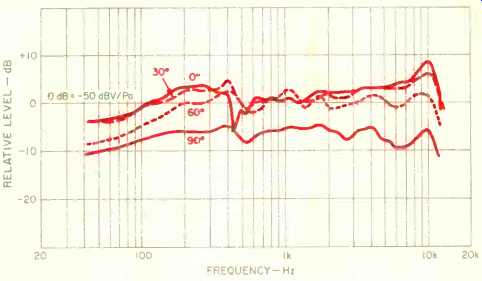
Fig. 4--Directional frequency responses of PZM-30GPG on 4 x 3 1/2 foot baffle.
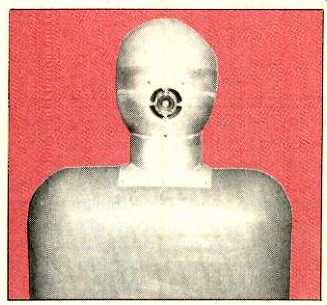
Fig. 5--Artificial Voice used for PZM talk test.
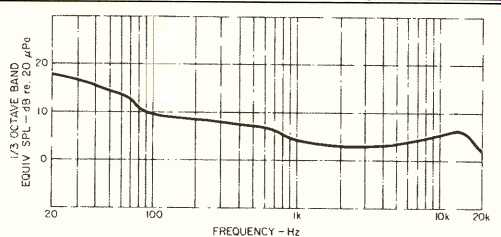
Fig. 6--Noise of PZM-30GPG with PX-18B power supply.

Table I--Baffle dimensions and cutoff frequencies for PZM.
Use and Listening Tests
My first listening test was at a press event sponsored by Crown. Dr. Clay Barclay, Crown's Promotion Manager, set up an 8-track recorder plus a stereo playback system in a mobile home. Selected members of the audio press were driven from New York City to Wilmington, Delaware in this vehicle. After the press left to eat dinner with the Music Director of the Delaware Symphony, Dr. Barclay spliced the wiring of the motor home to microphone cables coming from the Grand Opera House. When we returned from dinner to the motor home, we were able to compare three pairs of PZMs to two pairs of conventional condenser microphones while the orchestra played a concert. Two PZMs were on the floor of the stage, two on a disc overhead, and two on a false ceiling over the orchestra. The conventional mikes were "flown" in front of the stage. The PZMs on the floor sounded best during a piece with a guitar solo. The ceiling PZMs had the best sound on the Brahms Fourth Symphony. The conventional mikes never sounded superior to the PZMs. The disc-mounted PZMs usually sounded better than the conventional mikes, but poorer than the other PZMs. Although Dr. Barclay put on a fine demonstration, there were two flaws: The press could not sit in the house to sample the live sound, and, because the conventional mikes were clustered in one location, we had to accept Dr. Barclay's opinions that this was the best placement.
My first hands-on tryout of the PZM in an on-site recording occurred during the Christmas season of 1981 at "Glen-cairn," the home of the late Mr. and Mrs. Raymond Pitcairn in Bryn Athyn, Pa. Each year since the residence was completed in 1939, a "Christmas Sing" is held in the Great Hall. This is a large room with an 80-foot-high ceiling, and up to 800 townspeople attend. Members of the Philadelphia Orchestra's brass section play in a smaller room which is joined to the Great Hall by a large stone archway. The building has hand-cut stone walls, with teak floors and woodwork. The PZMs were placed about 8 feet apart on the stone floor of the archway. They did not sound as good when taped to the (very rough) stone walls of the arch. For comparison, RCA KB-2A "Paintbrush" velocity microphones were "flown" about 20 feet above the PZMs. Each set of mikes were then connected to identical Tandberg cassette recorders.
Lachlan Pitcairn, son of Raymond Pitcairn and an accomplished amateur musician, supervised the recordings. He had previously selected the conventional microphone type and placement. For this "Sing," however, the contrast in setup labor was great: The PZMs were taped to the floor, with power supplies hidden in a niche and short cable running along the floor to the recorder. The "flown" mikes required some human acrobatics, plus long cable runs and balancing transformers at the Tandbergs to eliminate noise and r.f.i.
The PZM and conventional recordings sounded almost identical in the low and midrange frequencies, including the same mix of direct and reverberant sound. The PZMs sounded brighter in the highs, but the velocity mikes had falling response above 5 kHz. I found it surprising that the microphones placed on the floor could sound similar to those overhead.
Since PZMs are also used for vocal and speech pickup, I was interested in how they would compare to conventional mikes with a speech source. A person is not a very consistent source and would tire before the tests could be completed. I was therefore fortunate to have on loan a model of the Artificial Voice (Fig. 5) developed by Dr. H. F. Olson at RCA Laboratories, and described in the Journal of the Acoustical Society of America (June 1966). This source duplicates the directivity pattern of a human voice from 63 Hz to 12 kHz and has uniform frequency response, ±3 dB, over this range. The Voice was driven from a tape recording which was dubbed from many plays of a carefully recorded tape loop. The phonetically balanced sentence, "Joe took father's shoe bench out, she was waiting at my lawn," spoken by me, was played back at a level of 65 dB at 1 meter, which is normal speech level. (It was rather disturbing to hear my own voice mirrored exactly by the aluminum headed dummy!) The PZM was placed on the floor 10 feet away from the Voice, and the conventional microphone placed on a tripod 5 feet above the PZM. The mikes were then laid on the floor, near the PZM and pointing at the Voice. First, the Nakamichi CM-700 microphone was used on the tripod with an omni capsule: The PZM audio sounded much less reverberant, as if the Voice were close-miked. The PZM thus exhibited long "reach," like a directional mike. Compared to the CM-700 with a cardioid capsule on the tripod, the PZM sounded similarly low in room reverberation, but crisper, more intelligible, and less boomy. Similar results were obtained with the omni and cardioid mikes on the floor, most closely approximating the PZM's sound when the cardioid was on the floor, set to its "Lo-Cut" position. This eliminated the boominess, but the PZM was still more crisp.
The PZM, placed on a floor, can equal or outperform conventional microphones mounted on floor stands or "flown." The simplified placement and easy portability of PZMs can be a boon to the amateur recordist or those involved in amateur theater productions. PZMs should be placed on large-area surfaces for critical recordings; 2 x 2 foot baffles will suffice for less critical work. The PZM should therefore not be placed on smaller baffles or be used by itself.
I think that the PZM is good enough to be a first choice in any application where it can be properly set up. Of course, the PZM is not suited to all situations, and rather than misuse it, I would opt for conventional microphones where necessary.
Although this review specifically pertains to the 30GP, the 6LP is similar. My tests of the 31S and 6S revealed that they have flatter low- and high-frequency response than the 30GP. They might be better for classical recordings, if properly located in a room which is free of low-frequency noise. The 6LP and 6S models are very small and best for use with miniature cassette recorders.
I hope that amateur recordists will discover that PZMs are the best way to obtain maximum audio quality with a mini mum of effort. Crown publishes much information on how professional sound people use PZMs; these publications can be of great value to the amateur. I also hope that readers will develop some unique ways to use PZMs and will tell us about them.
-- Jon R. Sank
(Audio magazine, March. 1983)
Also see:
Crown PZM-180 Pressure Zone Microphone (Equip.Profile, Mar. 1985)
Nakamichi Model CM-700 Electret Condenser Microphone Systems (Sept. 1978)
Neumann Models 83, 84, & 85 fet-80 Series Microphone System (Jan. 1978)
Speiden SF-12 Stereo Microphone (Mar. 1987)
= = = =